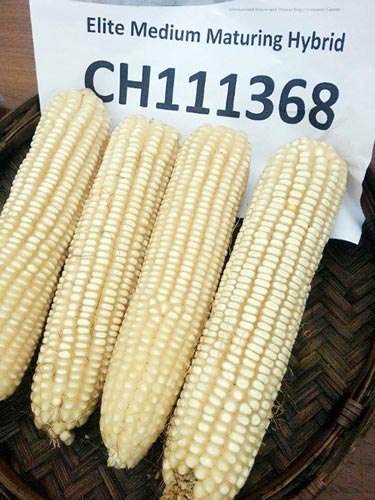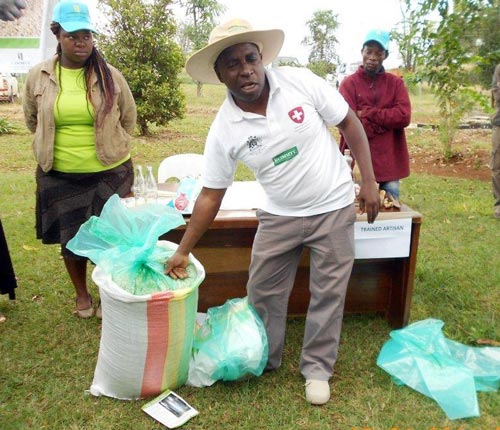By Cosmos Magorokosho, Mulugetta Mekuria and Tawanda Mushandu/CIMMYT
A strong hailstorm that ravaged the CIMMYT research station in Harare turned out to be an unplanned but effective demonstration for the Southern Africa Regional Office’s partners day, held on 15 April.
Participants were excited about the low-cost maize storage silos on display and the efficacy of the SuperGrainbag, a hermetically sealed grain storage system. They also were surprised to see how well the lodging-resistant varieties had withstood the hail that had fallen two weeks earlier.

The event drew more than 200 participants from various Zimbabwe government departments, private seed companies, universities, agriculture colleges, the donor community, diplomatic missions, agro-input companies, and other stakeholders. Economist Mulugetta Mekuria highlighted that the CIMMYT Harare station has evolved from a purely maize breeding station to a maize improvement and farming systems research station.
The participants visited programs showcasing technologies on effective grain storage; new drought-tolerant and disease-resistant hybrids and open-pollinated varieties (OPVs); and new technologies for phenotyping and sustainable intensification. They also learned about conservation agriculture technologies such as legumes that can be used effectively in soil improvement and crop rotation systems, low-cost field equipment suited to CA systems for smallholder farmers, and recommended agriculture input application for CA systems. The new hybrid and OPV maize varieties were classified according to maturity group, grain quality, disease resistance, plant aspect, and yield potential. Of particular interest were the germplasm products showing high yield potential, tolerance to low soil nitrogen and resistance to biotic stresses such as maize streak virus, northern leaf blight, grey leaf spot and cob rots.

The Maize Physiology program showcased the nitrogen-use efficiency work in progress and the latest low-cost technologies that are supporting the breeding activities, and how they can help breeders choose the best germplasm. The day ended with a discussion during lunch where participants gave positive and constructive feedback on what they had seen and learned in the field, and more importantly, on what they would wish to see CIMMYT scientists develop in the future.
 Climate adaptation and mitigation
Climate adaptation and mitigation